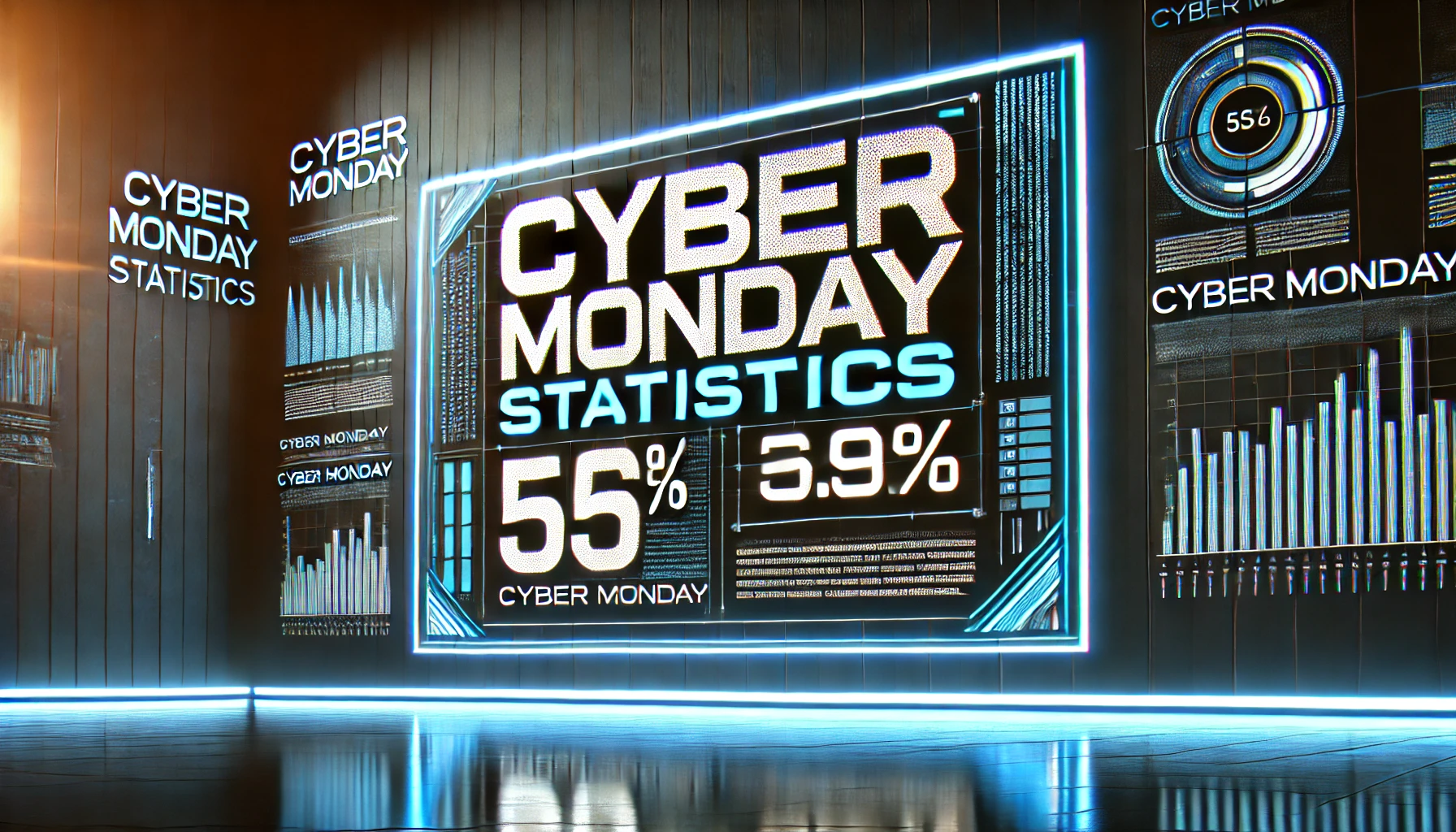Workplace Diversity Statistics By Leadership, Demographic, Benefit, Impact And Effects
Updated · Aug 26, 2024
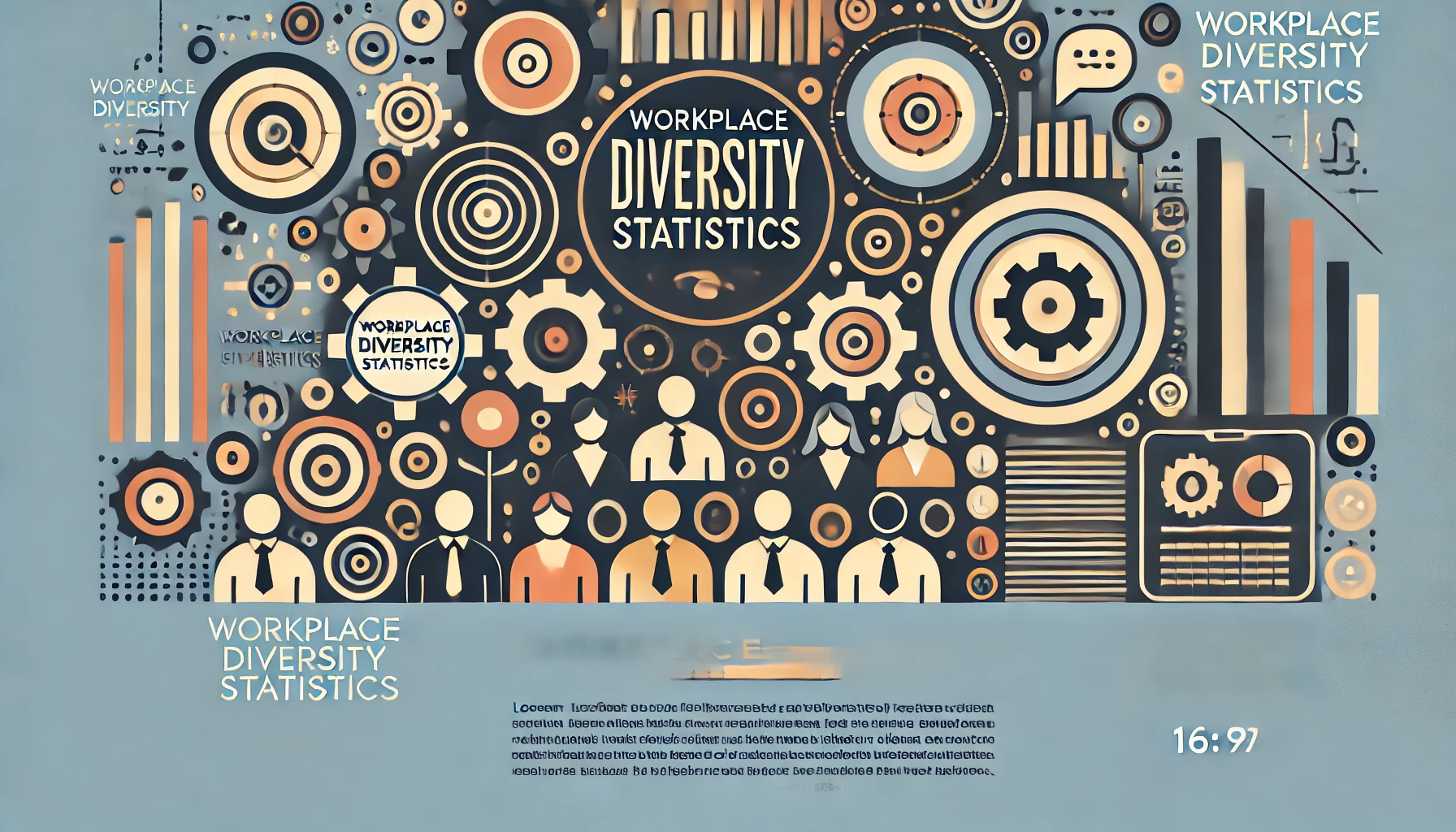
WHAT WE HAVE ON THIS PAGE
- Introduction
- Editor’s Choice
- What is Workplace Diversity?
- Importance Of Workplace Diversity
- General Workplace Diversity Statistics
- Leadership Diversity And Inclusion
- Global Workplace Diversity
- Workplace Diversity Demographics Statistics
- LGBTQ+ Discrimination At The Workplace
- Benefits Of Diversity In The Workplace Statistics
- Organizational Affinity Groups, Policies And ERGs
- DEI Issues That Impact Women In The Workplace
- The Business Impact On Corporate Diversity
- Financial Performance And Market Outcomes
- Effect Of Workplace Diversity On Employee Experience
- Human Resource Technology’s Place In Creating A Diverse Workplace
- Conclusion
Introduction
Workplace Diversity Statistics: In recent years, many companies worldwide have focused on promoting diversity, equality, and inclusion (DEI) in their workplaces. They now see that having a diverse team is very important; it’s not just something they talk about but something that impacts all their activities. There are many benefits to DEI programs, and there are no drawbacks. A diverse workforce can lead to higher employee engagement and help attract new talent.
Overall, having a diverse team is one of the best ways to achieve high success and productivity. We shall shed more light on Workplace Diversity Statistics through this article.
Editor’s Choice
- Companies that embrace diversity are 70% more likely to enter new markets.
- Inclusive hiring practices can boost revenue per employee by up to 30%.
- Employees at diverse companies are 12% more likely to feel a sense of belonging.
- Boosting diversity and inclusion can increase innovation by up to 20%.
- Companies with diverse management teams earn 19% more in revenue due to innovation.
- Companies with historically high levels of diversity on their executive teams are 62% more likely to outperform their competitors in terms of profitability.
- Companies with above-average diversity in their management teams reported 19 percentage points more revenue from innovations—45% of their total revenue compared to just 26% for companies with less diverse Leadership.
- From January to March 2023, 9.58 million working-age people (16 to 64) reported having a disability, which is 23% of the working-age population. This is an increase of 598,000 from the previous year.
- Workplace Diversity Statistics stated that AI and automation are expected to create 97 million new jobs by 2025.
- In the United States, the number of people identifying with three or more gender categories has significantly increased, rising from 16% to 64% over the past decade.
- Companies in the top 25% for gender diversity are 21% more likely to be profitable than average.
- Over 50% of employees wish their Workplace would improve its diversity efforts.
- Businesses with diverse leadership teams see a 35% higher financial return.
- 67% of job seekers think having a diverse workforce is important when choosing a company or job.
- Organizations that prioritize diversity and inclusion are 45% more likely to see an increase in market share.
- Gender-diverse companies are 15% more likely to outperform their competitors financially.
- Workplace Diversity Statistics stated that 67% of job seekers view diversity as a key factor when evaluating job opportunities.
- Companies with inclusive cultures are three times more likely to be high-performing.
- Diverse companies are 45% more likely to report a growing market share compared to the previous year.
- Employees in diverse and inclusive workplaces are ten times more likely to be highly effective.
What is Workplace Diversity?
Workplace diversity is about who works at a company—who you hire, promote, and recognize and how you ensure fairness. In other words, diversity means having people from different races, ethnicities, religions, genders, sexual orientations, and economic backgrounds in your workforce.
Inclusion, on the other hand, is about how employees feel at work. Even if a company is diverse, if employees don’t feel safe, valued, and welcome, the company is lacking in inclusion. This can also lead to lower productivity and performance. Inclusion means that employees should feel secure, valued, respected, accepted, and supported for who they are in their Workplace.
Importance Of Workplace Diversity
Workplace diversity can help your company in many ways, such as finding more talent, understanding your customers better, and increasing profits. Here’s how diversity can benefit your business:
- Access to More Talent
If you limit your hiring pool due to bias, you miss out on talented people. Embracing diversity helps you find skilled applicants from new sources. A reputation for diversity attracts a wider range of applicants and can reduce employee turnover, so you can focus on growth rather than constantly replacing staff.
- Better Understanding of Customers
A diverse workforce can lead to a more varied customer base because customers prefer companies that understand their needs. With this understanding, your company can create and market products and services that cater to a broad audience, giving you a competitive edge.
- Increased Profits
Diversity is good for company culture and for the bottom line. A 2017 McKinsey report found that companies with high gender diversity are 21% more likely to earn above-average profits.
- Boosted Productivity, Creativity, and Innovation
A diverse team brings different ideas and viewpoints, which fuels creativity and innovation. In brainstorming sessions, diverse groups can come up with unique solutions that a less varied team might need to catch up on. The more diverse the team, the more dynamic and effective the problem-solving becomes.
- Higher Employee Engagement
Employees who feel valued and included are likely to work harder. According to a Workplace Diversity Statistics report, employees in companies with diversity in top management are 57% more effective at working with their peers.
- Lower Turnover Rates
People are more likely to stay at a company where they feel welcome. Diverse workplaces have employees who are 19% more likely to stay in their jobs, helping you build a stable and committed team.
- Improved Company Culture
Company culture is about shared values and how people work together. With diversity, some people might feel included. A diverse team helps create a welcoming environment where everyone feels included.
- Positive Brand Reputation
Diversity can boost your company’s reputation. By showing a commitment to inclusivity and social responsibility, your company can appeal to customers, employees, and stakeholders.
General Workplace Diversity Statistics
- Diverse companies are 70% more likely to enter new markets compared to their competitors.
- Studies show that diverse teams are 87% better at making decisions.
- In the US, hiring just 1% more people with disabilities could boost GDP by $25 billion.
- Companies in the top 25% for racial and ethnic diversity are more likely to outperform their competitors.
- Diversity can increase team innovation by 20%, as stated by Workplace Diversity Statistics.
- Companies with above-average diversity see 19% more revenue from innovations.
- 92% of business leaders think that education programs for employees would help achieve diversity and inclusion (D&I) goals.
- 69% of executives believe that diversity and inclusion are crucial issues.
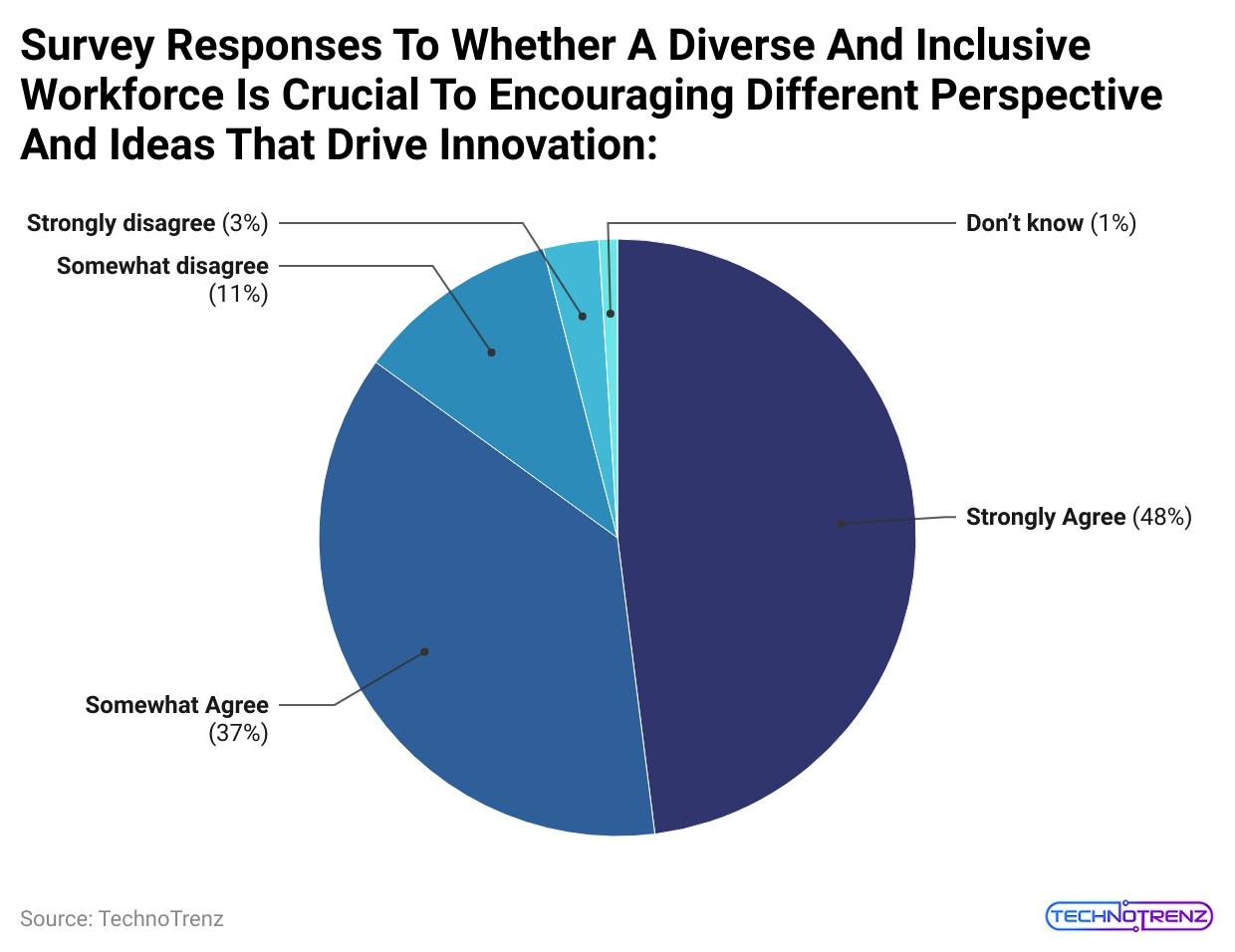
(Reference: selectsoftwarereviews.com)
- Companies with a diverse workforce have 2.3 times higher cash flow than their competitors.
- The workforce is becoming more diverse. 57% of US millennials are white, compared to 72% of Baby Boomers.
- 57% of people think companies should do more to promote diversity.
- The number of diverse employees has doubled from 1980 to 2020.
- 67% of job seekers consider diversity a key factor in choosing where to work.
- 41% of managers say they are “too busy” to work on diversity and inclusion initiatives.
- Men are twice as likely to be hired, regardless of the gender of the hiring manager.
- There are more male CEOs in Fortune 500 companies named John (5.3%) or David (4.5%) than there are female CEOs.
- Gender-diverse companies make, on average, 25% more than those with less gender diversity.
- 48% of Gen Z are racial or ethnic minorities, as per Workplace Diversity Statistics.
- 40% of people believe there is a double standard against women.
- Only 3.2% of executive and senior management roles are held by Black employees.
- Companies with a diverse workforce are six times more likely to be innovative.
- Companies with inclusive cultures are eight times more likely to achieve better business results.
- 35% of LGBTQ+ employees have hidden their sexuality at work due to fear of discrimination.
- Workplace Diversity Statistics stated that only 4.1% of Fortune 500 companies have a female CEO.
- 70% of men are satisfied with decision-making in their organization compared to 40% of women.
Leadership Diversity And Inclusion
- 74% of employees say that senior leaders support efforts to improve diversity, equity, and inclusion (DEI) in their organizations.
- Women hold 26% of executive positions, and only 5% are women of color.
- Out of 95 countries, 40 have very high levels of economic gender inequality.
- Workplace Diversity Statistics stated that women of color often face extra bias, resulting in fewer leadership roles.
- Only 4.1% of Fortune 500 CEOs are women.
- Just 3.2% of Fortune 500 companies share diversity data.
- Diversity programs often fail 70% of the time, usually because management needs to prioritize or believe in them.
- Workers with professional certifications have much higher labor force participation (87.7%) compared to those without certifications (57.8%).
- 77% of CEOs plan to use strategies that boost diversity and inclusion.
- More than two-thirds of executives think diversity and inclusion are very important.
- Leaders who promote inclusion can increase how included people feel by up to 70%.
- A study of over 20,000 companies in 91 countries found that firms with more female executives are more profitable.
- Women make up 39% of the supply chain workforce but only 11% of executive leadership positions.
- Workplace Diversity Statistics stated that almost 60% of businesses need dedicated roles for DEI.
- 71% of Black and 72% of Hispanic workers believe their employers should do more to enhance organizational organizational diversity, compared to 58% of white employees.
- In 2022, 59% of women reported experiencing non-inclusive behavior at work.
- Nearly 60% of women in hybrid work settings feel excluded from meetings and discussions.
- Less than half of companies have formal DEI policies and clear enforcement procedures.
- Almost half of companies have a strategic plan to improve DEI.
Global Workplace Diversity
- According to the 2023 Global Gender Gap Index, the gender balance in labor-force participation improved from 63% in 2022 to 64% in 2023.
- Women around the world face higher unemployment rates than men, with women’s unemployment at about 4.5% compared to 4.3% for men.
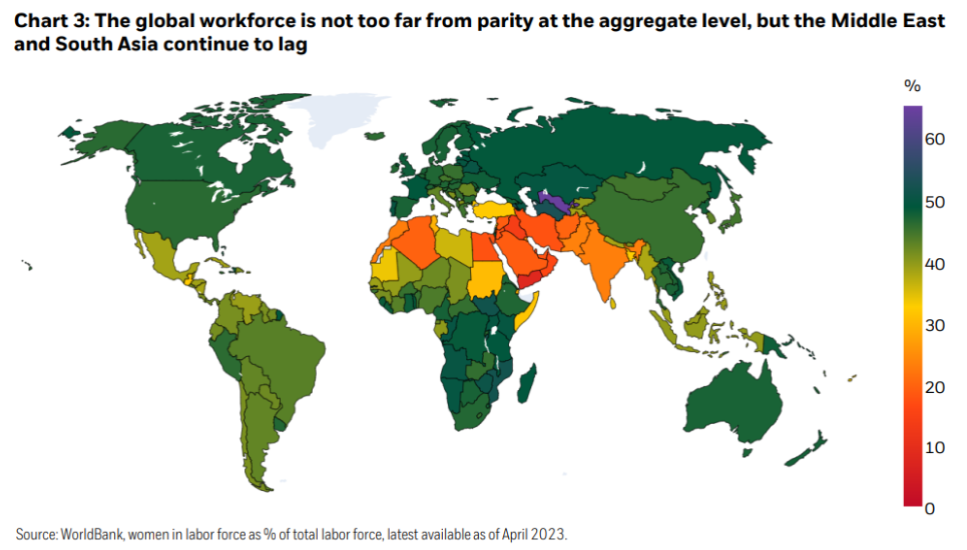
(Source: selectsoftwarereviews.com)
- Iceland remains in first place for the 14th year in a row, closing over 90% of its gender gap with a score of 91.2%.
- Europe leads in gender equality with a score of 76.3%, followed by North America at 75%, which is 1.9 percentage points lower than in 2022.
- Latin America and the Caribbean are third, with a score of 74.3%, followed by Eurasia and Central Asia at 69%.
- Workplace Diversity Statistics stated that East Asia and the Pacific have a score of 68.8%, and Sub-Saharan Africa is sixth.
- It’s estimated that it will take about 162 years to close the gender gap in political empowerment, 169 years in economic participation and opportunity, and 16 years in educational attainment.
- Southern Asia has the second-lowest score at 63.4%, and the Middle East and North Africa are the furthest from gender parity.
- Women and minorities often feel they need to change companies to advance their careers.
- A study by Development Dimensions International shows that women are 1.5 times more likely to leave their jobs for better career opportunities than men.
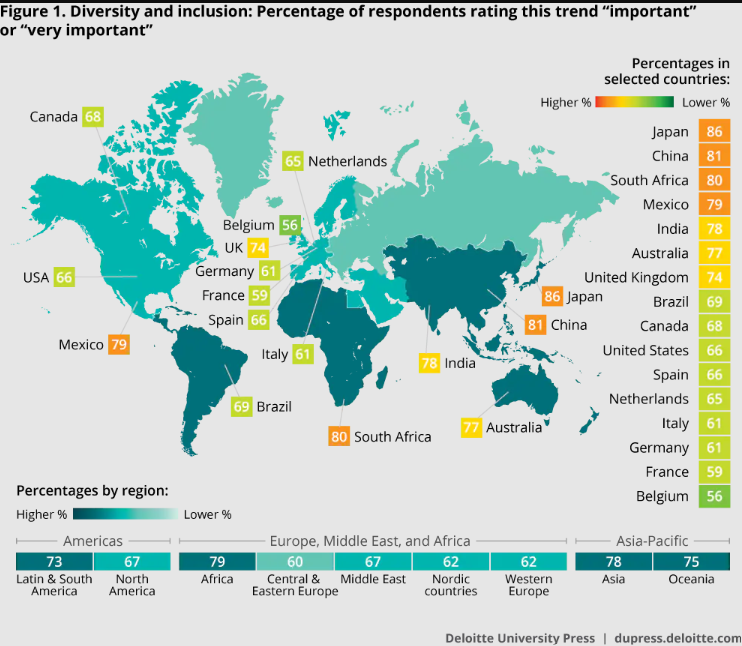
(Source: deloitte.com)
- According to Workplace Diversity Statistics, two-thirds of workers from marginalized racial and ethnic groups in Australia, Canada, New Zealand, South Africa, the UK, and the US have faced racism at work at some point, and half have experienced it in their current jobs.
- Nearly half have faced workplace harassment, and 32% have encountered inequities like pay disparities and limited career advancement opportunities compared to their peers.
- Building trust with senior leaders is crucial for female mid-level leaders.
- Among those who plan to leave their jobs, 64% of women and minority leaders cited a lack of trust in senior leaders as a main reason, compared to only 27% of those who do trust their leaders.
- In the UK, about 31% of employees have experienced microaggressions or discrimination from their managers in the past six months.
- In the US, three out of five employees report regular encounters with race-based microaggressions, while two out of five encounter gender-based microaggressions.
Workplace Diversity Demographics Statistics
- Many people feel being a man or White gives them an advantage in the Workplace.
- 56% of workers think focusing on DEI is mostly positive.
- Women are more likely than men to prioritize working in a diverse environment. For example, 37% of women value a racially and ethnically diverse workplace compared to 26% of men, and 31% of women prefer a gender-balanced environment compared to 20% of men.
- Workplace Diversity Statistics stated that around 58% of workers say their Workplace is a mix of different ages.
- Only 32% of workers think racial and ethnic diversity is extremely or very important in their Workplace.
- Among different groups, 53% of Black workers, 39% of Hispanic workers, 25% of White workers, and 43% of Asian workers value working in a diverse environment.
- Women are more likely than men to value DEI at work (61% vs. 50%).
- 78% of workers who lean Democratic support focusing on DEI, compared to 30% of workers who lean Republican.
- Half of the workers consider physical disability accessibility extremely or very important.
- 58% of women highly value workplace accessibility, compared to 41% of men.
- Most employees (61%) say their workplaces have fair policies for hiring, pay, and promotions, and over half (52%) have had DEI-related training or meetings.
- 38% of workers have participated in DEI training in the past year.
- Only 6% of workers are members of affinity groups or employee resource groups (ERGs).
- 36% of workers believe being a man makes it easier to succeed at work as per Workplace Diversity Statistics.
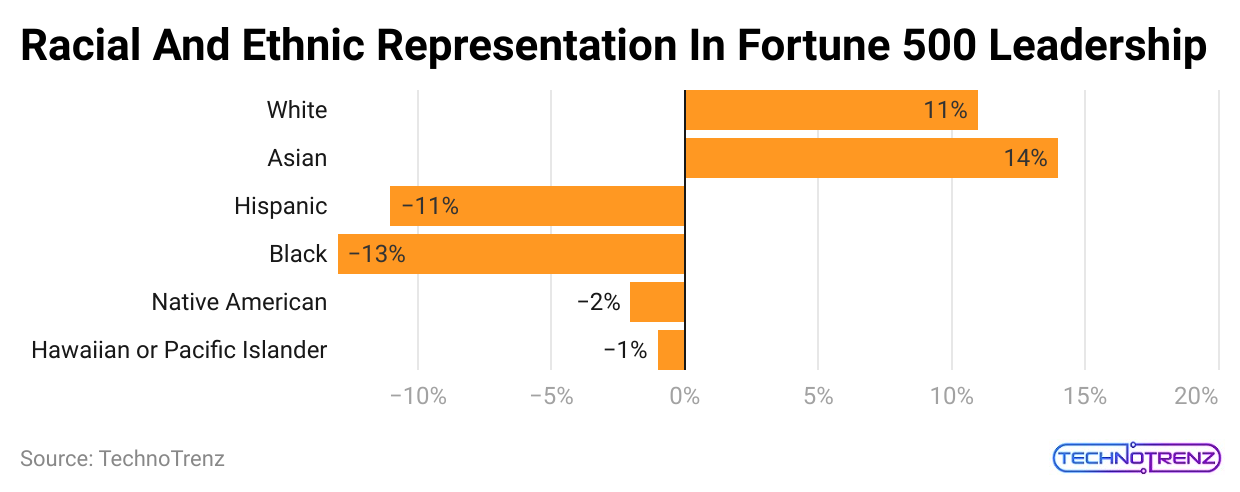
(Reference: flair.hr)
In Private Equity (PE):
- At the end of 2022, 48% of entry-level roles were held by women.
- Women held only 20% of managing-director roles.
- Workplace Diversity Statistics stated that women made up 33% of entry-level investing roles.
- Women’s representation in C-suite roles in PE globally will increase to 17% by the end of 2022.
- Men in investing roles are about 50% more likely to be promoted than women.
- Ethnic and racial minorities make up only 20% of managing-director-level investing professionals in the US and Canada.
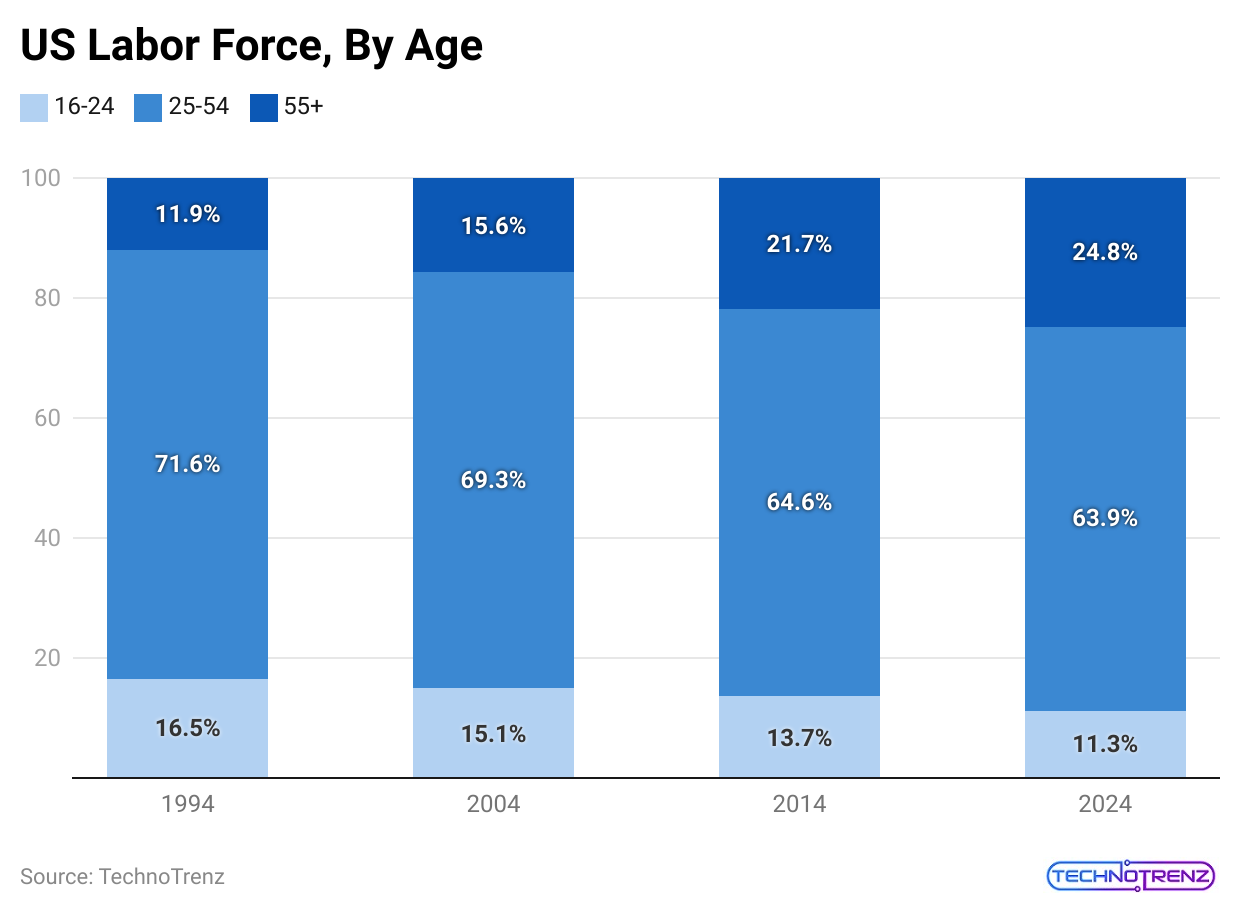
(Reference: vervoe.com)
In the US Civilian Labor Force :
- 22,814 Black individuals were part of the workforce.
- Eleven thousand eight hundred eighty-three women were included in the labor force.
- Twenty-one thousand forty-three individuals were from “all other groups.”
- 37,392 Hispanic workers were part of the labor force.
- Unemployment rates varied: 8.6% for Black or African American individuals, 8.2% for American Indians and Alaska Natives, and 8.2% for people of two or more races.
- Whites made up 77% of the labor force, while Blacks and Asians made up 13% and 7%, respectively.
- The highest labor force participation rates were for Native Hawaiians and other Pacific Islanders (66.9%), Hispanics (65.5%), and people of two or more races (65.4%).
- The employment-population ratio ranged from 55.5% for American Indians and Alaska Natives to 62.2% for Native Hawaiians and Other Pacific Islanders.
- Over 90% of Whites, Blacks, and Asians had at least a high school diploma, while 78% of Hispanics did.
- Workplace Diversity Statistics stated that Asians were the most likely to have a college degree, with 67% holding a bachelor’s degree or higher.
LGBTQ+ Discrimination At The Workplace
- In the US, 46% of LGBTQ+ employees have faced discrimination at work.
- In the UK, nearly 1 in 5 LGBTQ+ employees have received negative comments or treatment from coworkers in the past year because of their LGBTQ+ identity.
- Over a third of people have kept their LGBTQ+ identity hidden at work due to fear of discrimination.
- 2 in 5 bisexual employees are not open about their sexuality at work.
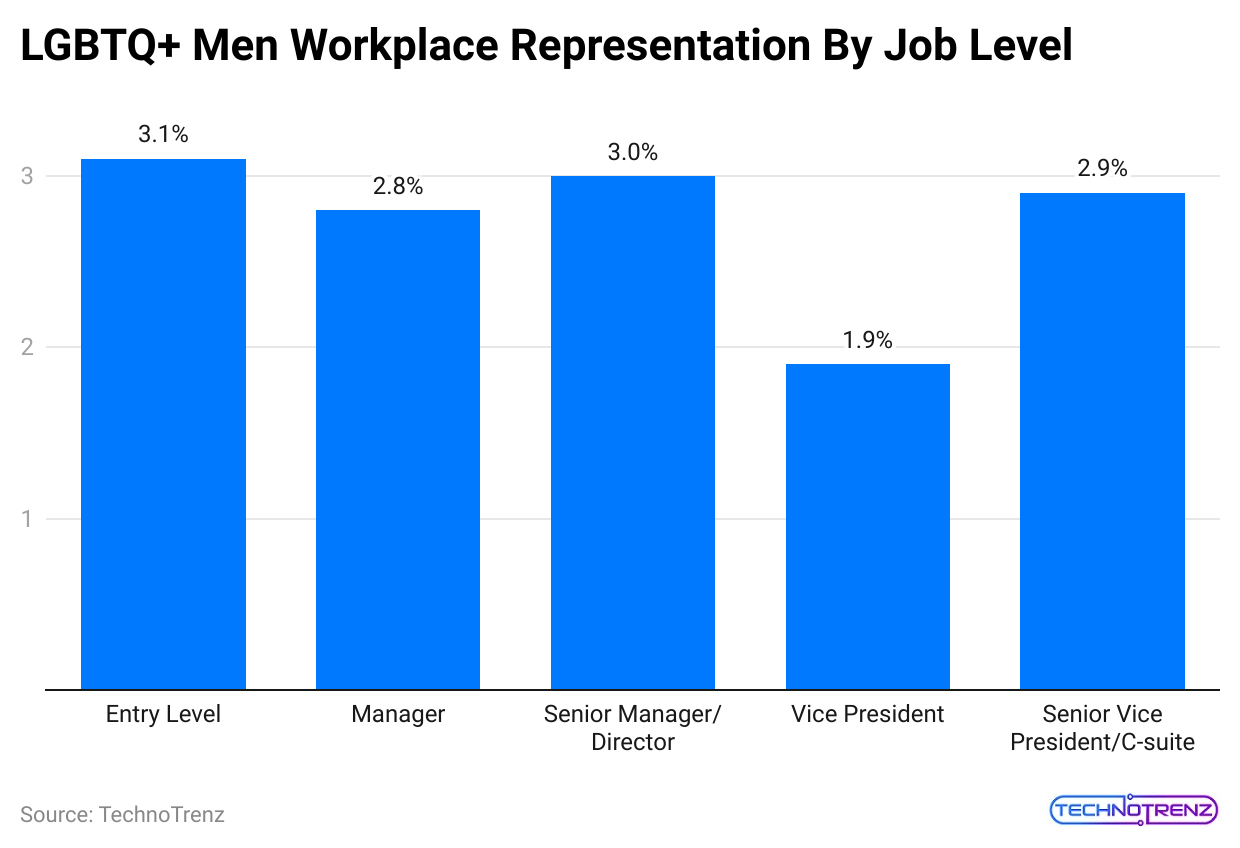
(Reference: zippia.com)
| Levels | % |
| Entry Level |
3.1% |
|
Manager |
2.8% |
| Senior Manager/ Director |
3% |
|
Vice President |
1.9% |
| Senior Vice President/C-suite |
2.9% |
- 1 in 10 LGBTQ+ employees from Black, Asian, and minority ethnic backgrounds have been physically attacked at work by customers or colleagues.
- 1 in 8 transgender employees have been physically attacked at work in the past year due to their gender identity, as per Workplace Diversity Statistics.
- Almost a third of non-binary employees and 1 in 5 transgender employees feel unable to wear work clothes that match their gender expression.
- About 40% of LGBTQ+ staff believe their organization’s policies are not sufficient, and a significant number would not feel comfortable reporting homophobic or biphobic bullying at work.
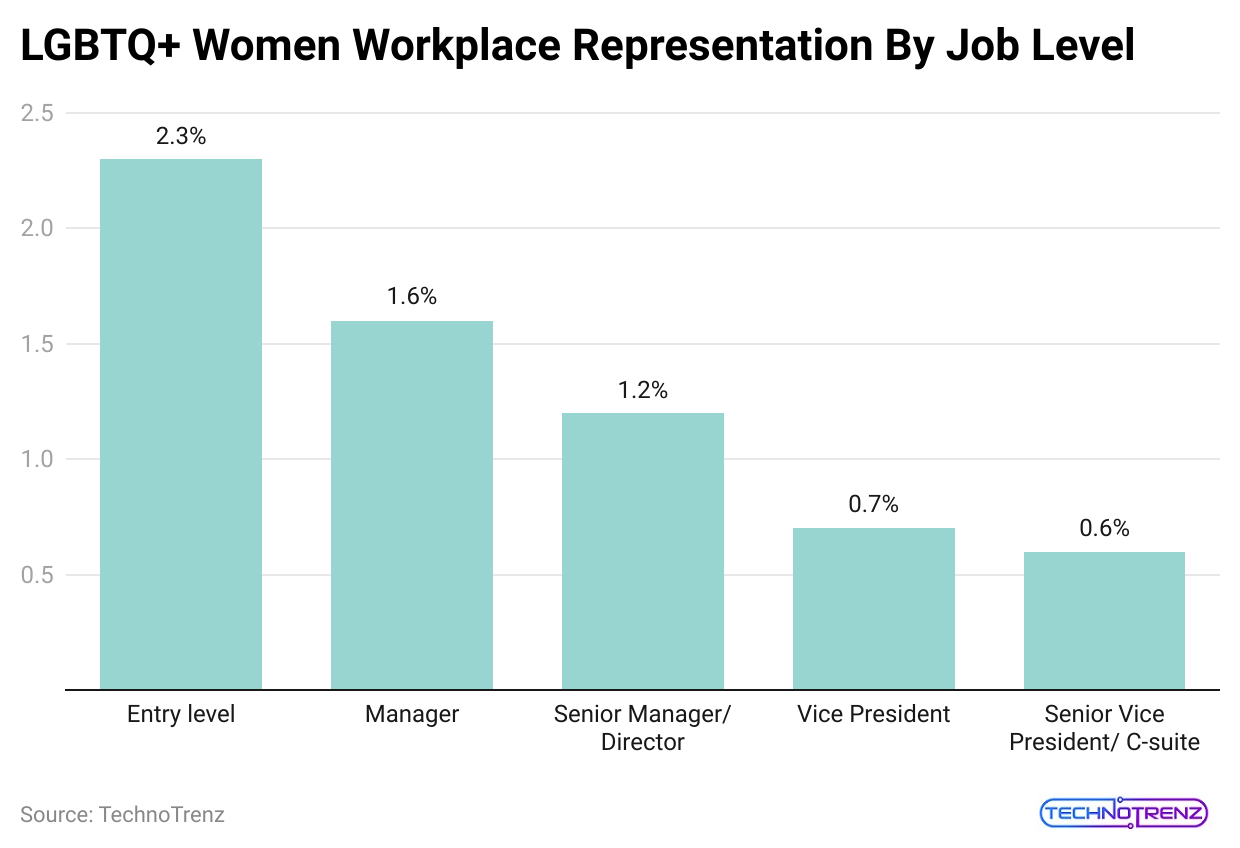 (Reference: zippia.com)
(Reference: zippia.com)
| LGBTQ+ | % |
| Entry level |
2.3% |
|
Manager |
1.6% |
| Senior Manager/ Director |
1.2% |
|
Vice President |
0.7% |
| Senior Vice President/ C-suite |
0.6% |
- LGBTQ+ employees are more likely to be satisfied with their jobs and overall life if they have supportive managers and colleagues.
- This creates a more positive work environment and encourages LGBTQ+ employees to be open about their identity.
- Having LGBTQ+ policies, such as anti-discrimination rules and benefits for same-sex partners, can improve performance and productivity.
Benefits Of Diversity In The Workplace Statistics
- Workplace Diversity Statistics stated that teams with a mix of different backgrounds are 1.7 times more innovative.
- Diverse teams excel in decision-making and creativity, outpacing individuals by up to 87% in generating new ideas.
- Companies with gender-diverse executive teams perform 21% better. These companies often see happier customers and increased sales, with diverse Leadership driving superior value for clients.
- Companies with more women in executive roles deliver 34% higher returns to shareholders.
- Women in top positions generate 7% of total revenues for listed companies, despite only 5% being led by women.
- Inclusiveness boosts employee engagement, leading to 1.4 times higher revenue and greater enthusiasm in the Workplace.
- 85% of CEOs with diverse and inclusive company cultures see increased profits.
- Companies with women in at least 15% of senior roles also report a 5% increase in equity.
- Workplace Diversity Statistics stated that almost 73% of employers believe that diversity leads to more creative thinking.
- Diverse teams are seen as crucial for reflecting the community and promoting ethical business practices.
- A more diverse workforce could increase global GDP by $28 trillion.
- In the UK, a 10% rise in gender diversity in senior teams can lead to a 3.5% increase in earnings before interest and taxes (EBIT).
- Racially diverse teams attract more customers. They average 35,000 customers compared to 22,700 for less diverse teams, showing that diversity can expand customer reach.
- 78% of employees believe that diversity and inclusion give companies a competitive advantage.
- Many also track how often senior managers discuss and promote diversity within the company.
- Companies with diverse teams bring in 2.3 times more cash flow. This means that businesses focusing on inclusivity and diversity see a significant boost in their revenue per employee.
- Companies with diverse leadership teams see a 19% increase in revenue and are 70% more likely to enter new markets.
- Diverse teams at all levels not only enhance a company’s image but also drive higher earnings and new opportunities.
- Blind recruitment, where the applicant’s identity is hidden, increases the chances of hiring women by 46%.
- Similarly, resume screening tools have improved minority representation, increasing first-round interview offers by 40%.
Organizational Affinity Groups, Policies And ERGs
- About 61% of US workers report that their company has policies to ensure fairness in hiring, pay, or promotions.
- Additionally, 52% say they have training or meetings on DEI at work.
- Only 26% of US workers say their company has affinity groups or ERGs based on shared identities.
- According to workplace diversity statistics, 58% of US workers say that their workplace doesn’t have affinity groups or ERGs or that they aren’t members of any.
- Less than 20% of companies offer financial rewards to senior leaders who meet diversity goals.
- Organizational policies, affinity groups, and employee resource groups (ERGs) are crucial for creating a diverse and inclusive workplace.
- The effectiveness of these initiatives to promote diversity, equity, and inclusion (DEI) depends on how effectively companies enforce policies that ensure fairness in hiring, pay, and promotions.
- Business leaders (28%) are more likely to view affinity groups as strategically valuable, compared to only 15% of employees, who are the main users of these groups.
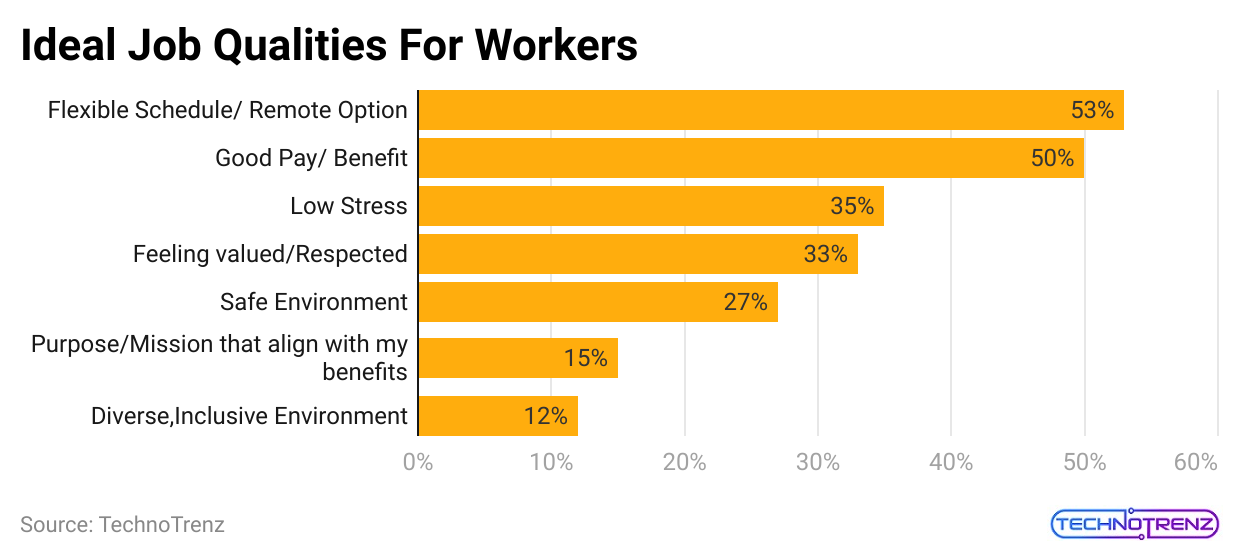
(Reference: doit.software)
- 46% of global companies use DEI programs to attract and keep talent.
- 49% of global companies offer training on non-discrimination and compliance with regulations.
- 74% of global companies have affinity groups that help people connect (38%), run programs (37%), and offer support and mentorship (34%).
- 53% of Learning and Development (L&D) professionals have a stronger focus on DEI in 2023.
- 60% of employees want business leaders to speak out on diversity issues.
- 50% of HR decision-makers believe their company could do more to include people from marginalized groups.
- 25% of employees have faced discrimination at work based on their identity. Additionally, 34% have encountered unwelcome comments or behavior.
- 23% of HR decision-makers report receiving complaints about gender discrimination.
- 11% of HR leaders think that people with disabilities in their organization don’t have equal access to development opportunities.
- 61% of employees say they have yet to receive any DEI training from their employer; only 24% received it during onboarding.
- 26% of employees say DEI should have been emphasisedemphasised during the recruitment process. This figure rises to 30% for women in Canada, compared to 24% for men.
- 23% of organizations do not use any tools to measure DEI and have no plans to implement them soon, mostly due to budget constraints.
- 52% of people from marginalized groups are not actively involved in DEI policy or actions.
- 48% of employees from non-marginalized and non-marginalized groups are also not actively involved in DEI planning and execution.
- Workplace Diversity Statistics stated that almost 47% of people from marginalized groups find it hard to speak up against discrimination.
DEI Issues That Impact Women In The Workplace
Despite ongoing efforts to improve gender equality at work, women, especially women of color, still face significant challenges.
- Workplace Diversity Statistics estimates that it will take American companies about 29 years to achieve gender equality in top executive positions.
- Globally, the percentage of females in higher leadership posts has grown from 31.1% in 2016 to 32.6% in 2022 but dropped slightly to 32.2% in early 2023.
- As of 2023, about 10% of CEOs in Fortune 500 companies are women as per Fortune, 2023.
- Only 1 out of 4 top executives (C-suite) is a woman.
- Only 1 out of 20 top executives is a woman of color.
- 32% of women in technical and engineering roles are often the only women in the room at work.
- Since 2015, the number of women in top executive roles, such as president and vice president, has increased from 17% to 28%.
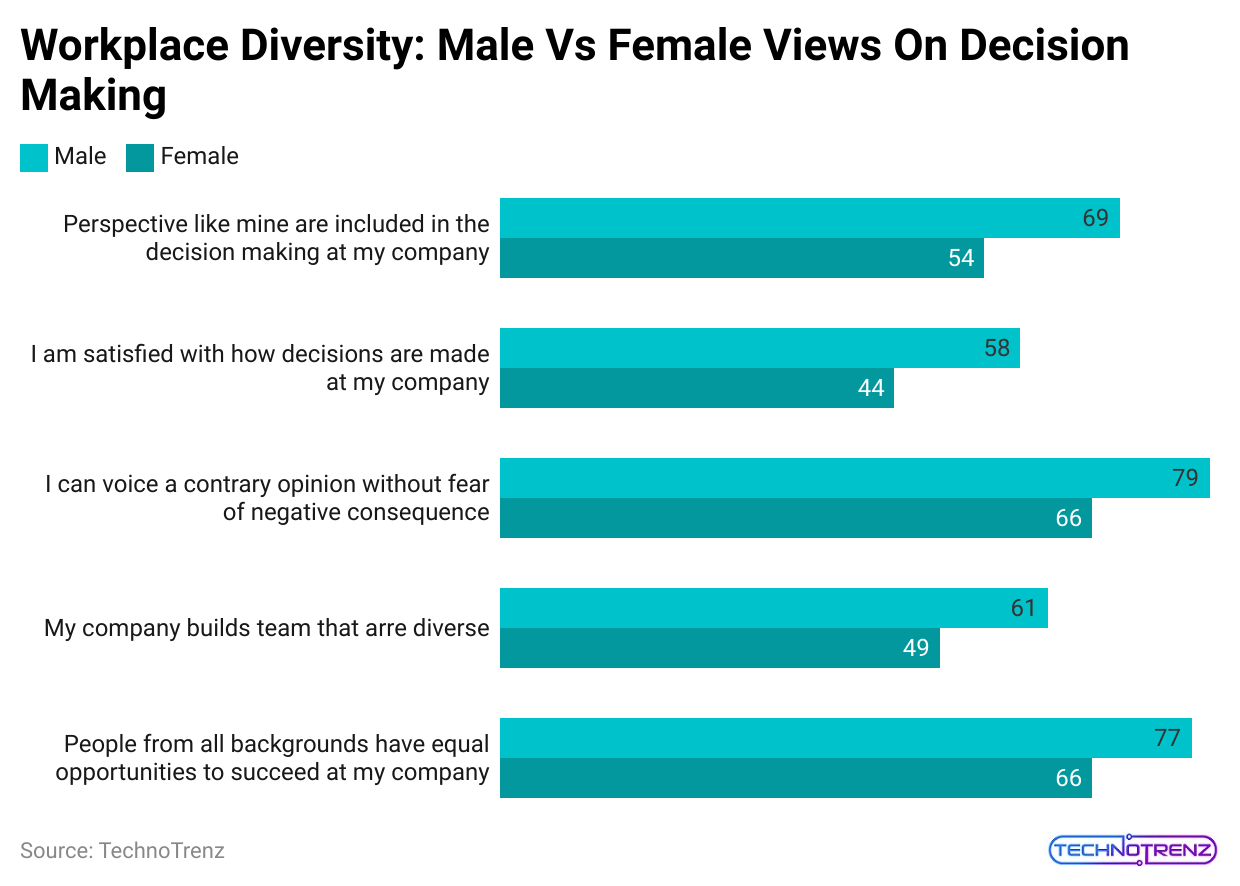
(Reference: selectsoftwarereviews.com)
- Women in Leadership are two times as prone as men to be mistaken for someone less senior.
- 37% of female leaders have had a coworker take credit for their ideas, compared to 27% of male leaders.
- 12% of female leaders have had someone say or imply they’re not qualified, versus 6% of men leaders.
- Workplace Diversity Statistics stated that around 39% of women leaders have had their judgment questioned, compared to 28% of male leaders, with Black women leaders facing this at a rate of 55%.
- 29% of women working on-site report experiencing microaggressions, compared to 19% of women working remotely.
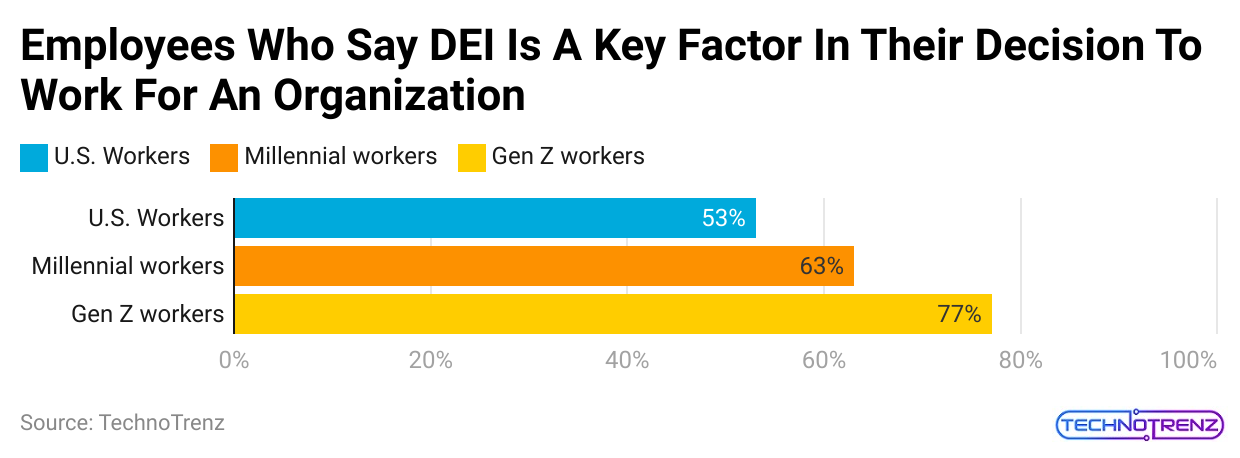
(Reference: selectsoftwarereviews.com)
- Women in leadership roles spend twice as much time on diversity, equity, and inclusion (DEI) initiatives compared to their male counterparts.
- 52% of senior women managers handle all their family’s housework and childcare, while only 13% of senior men managers are primary family caretakers.
- At the current rate, it will take about 131 years to close the global gender gap, which includes equality in economic participation, educational attainment, health, and political empowerment.
The Business Impact On Corporate Diversity
- Impact of Workplace Discrimination: Almost 50% of Black and Hispanic employees have left their jobs due to workplace discrimination, compared to 38% of White employees.
- Belief in Equal Opportunities: 78% of employees at companies with established DE&I policies feel that everyone has equal chances to succeed.
- Diversity in Job Applications: 32% of job seekers would not apply to a company that lacks diversity.
- Increased Productivity: Inclusive teams are 35% more productive.
- Gender Diversity and Performance: Companies with gender diversity perform 48% better than those with less gender diversity.
- Higher Returns on Equity: Companies with more diverse executive teams saw 53% higher returns on equity (ROE) and better earnings.
- Better Performance with Diversity: Organizations with ethnic diversity perform 35% better.
- Gender Diversity Boosts Performance: Companies with gender diversity are 15% more likely to perform better.
- Diversity Strategy Benefits: 85% of CEOs said having a diversity strategy improved their business performance.
- Job Seekers Value Diversity: Over 75% of job seekers consider a diverse workforce essential when evaluating job offers.
Financial Performance And Market Outcomes
- Businesses with diverse management teams see 19% more revenue from innovation.
- Diverse companies are 45% more likely to grow their market share each year.
- Companies with ethnic diversity are 35% more likely to outperform their rivals.
- Firms in the top 25% for racial and ethnic diversity are 30% more likely to achieve financial returns above the industry median.
- Workplace Diversity Statistics stated that diverse businesses are seven times more likely to enter new markets.
- Inclusive companies are 1.7 times more likely to lead in innovation.
- Companies with the highest gender diversity are 15% more likely to earn financial returns above the national industry average.
- Firms with high ethnic and cultural diversity are 33% more likely to be more profitable than their competitors.
- Companies with above-average gender diversity have a 21% higher chance of being profitable.
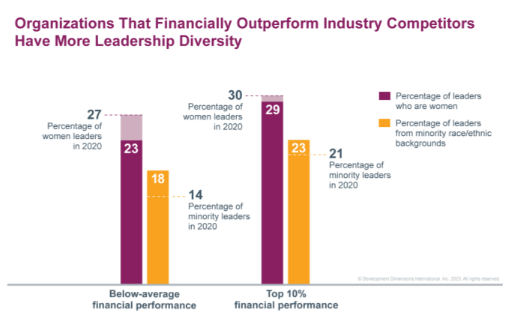
(Reference: selectsoftwarereviews.com)
- Ethnically diverse firms are 25% more likely to achieve higher-than-average financial returns.
- Diverse companies are 80% more likely to report entering a new market in the past year.
- Firms with high gender diversity are 15% more likely to surpass national industry financial benchmarks.
- Companies with inclusive hiring practices can generate up to 2.3 times more cash flow per employee.
- Organizations that actively promote diversity and inclusion are nearly twice as likely to lead in innovation.
- Firms with diverse boards have a 95% higher return on equity.
- Companies with higher gender diversity have a 15% better chance of outperforming their competitors.
- Inclusive companies are 1.7 times more likely to be innovation leaders.
- Diverse firms are 70% more likely to capture new markets.
- Workplace Diversity Statistics stated that Gender-diverse companies are 15% more likely to outperform their peers.
- Companies with diverse management teams have 19% more revenue due to innovation.
Effect Of Workplace Diversity On Employee Experience
- When looking for a job, young millennials and Gen Z prioritize diverse and inclusive organizations organizations.
- Workplace Diversity Statistics reports that 70% of millennial and Gen Z employees are more likely to stay with a company for more than five years if it has a diverse workforce.
- However, if a company’s diversity and inclusion efforts do not meet expectations, more than half (52%) of these employees would think about leaving within two years.
- Workplace Diversity Statistics stated that our Leadership found a strong link between LGBTQ+ inclusion and employee retention.
- Beyond financial gains, Development Dimensions International found that organizations developing more high-potential leaders from diverse backgrounds are 11 times more likely to have high-quality leaders overall, 10 times more likely to have a strong leadership team, and 3.2 times more likely to engage and keep top talent.
- Globally, 39% of job seekers have turned down or decided not to pursue a job because they felt the company was not inclusive.
- Additionally, 60% expect CEOs to address social and political issues publicly, according to McKinsey.
- 97% of LGBTQ+ employees at companies with high LGBTQ+ inclusion planned to stay, compared to only 38% at companies with low LGBTQ+ inclusion.
- Despite this, the Pew Research Center reports that only 26% of US workers say their employer has affinity groups or employee resource groups (ERGs) based on shared identity.
- About 60% say these groups are either not available at their Workplace or that they aren’t members.
Human Resource Technology’s Place In Creating A Diverse Workplace
- Although collecting this diversity data helps with organizational analysis, it has yet to be fully used.
- Of the companies surveyed, 52% analyze employee turnover by gender, and 40% analyze it by race and ethnicity.
- These companies review promotion and internal movement data by gender in 46% of cases and by race and ethnicity in 33% of cases.
- 40% of companies track diversity in hiring results based on gender and 31% based on race and ethnicity.
- According to the Harvard Business Report, over 90% of companies collect gender data using their HR systems.
- Additionally, 88% of these companies also gather race and ethnicity data in the same way.
- Organizations also track this information in their hiring processes using Applicant Tracking System (ATS) software.
- Specifically, 75% of companies collect gender data during hiring, and 69% collect race and ethnicity data.
Conclusion
Companies with a more diverse staff are not only more appealing to work for but also tend to do better than their competitors. Having a range of viewpoints is good for any organization because it helps build a positive public image. Adopting an inclusive approach can boost employee productivity, improve service quality, attract more clients, and increase profitability. This article has shed more light on Workplace Diversity Statistics.
Sources
FAQ.
Companies first need to commit to diversity to make better decisions. This means creating teams that are diverse in age, gender, ethnicity, and location. According to the Cloverpop study, teams with this kind of diversity make better business decisions 87% of the time.
To keep your best employees, ensure your Workplace is inclusive. 75% of US workers said they would leave their jobs for a company with a more diverse environment. People want to feel they belong and that their work is valued.
Research shows that when there’s not enough diversity and high turnover among minority staff, it affects everyone at the company, even those not directly involved. As a result, employees see the unfair treatment of others and feel less connected to their Workplace.

After graduating in Electrical Engineering, Maitrayee moved into writing after working in various technical roles. She specializes in technology and Artificial Intelligence and has worked as an Academic Research Analyst and Freelance Writer, focusing on education and healthcare in Australia. Writing and painting have been her passions since childhood, which led her to become a full-time writer. Maitrayee also runs a cooking YouTube channel.






